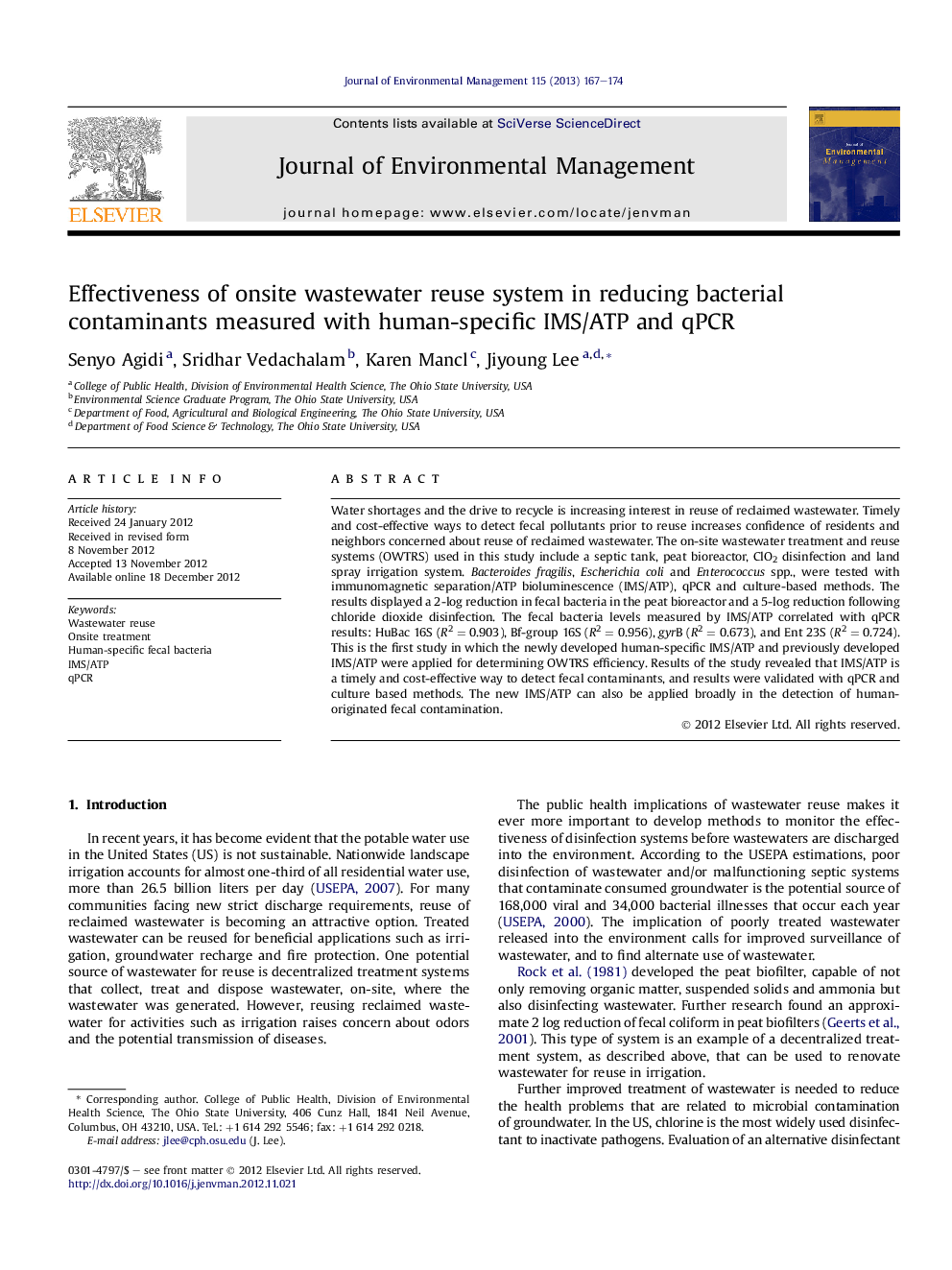| کد مقاله | کد نشریه | سال انتشار | مقاله انگلیسی | نسخه تمام متن |
|---|---|---|---|---|
| 1056236 | 1485297 | 2013 | 8 صفحه PDF | دانلود رایگان |

Water shortages and the drive to recycle is increasing interest in reuse of reclaimed wastewater. Timely and cost-effective ways to detect fecal pollutants prior to reuse increases confidence of residents and neighbors concerned about reuse of reclaimed wastewater. The on-site wastewater treatment and reuse systems (OWTRS) used in this study include a septic tank, peat bioreactor, ClO2 disinfection and land spray irrigation system. Bacteroides fragilis, Escherichia coli and Enterococcus spp., were tested with immunomagnetic separation/ATP bioluminescence (IMS/ATP), qPCR and culture-based methods. The results displayed a 2-log reduction in fecal bacteria in the peat bioreactor and a 5-log reduction following chloride dioxide disinfection. The fecal bacteria levels measured by IMS/ATP correlated with qPCR results: HuBac 16S (R2 = 0.903), Bf-group 16S (R2 = 0.956), gyrB (R2 = 0.673), and Ent 23S (R2 = 0.724). This is the first study in which the newly developed human-specific IMS/ATP and previously developed IMS/ATP were applied for determining OWTRS efficiency. Results of the study revealed that IMS/ATP is a timely and cost-effective way to detect fecal contaminants, and results were validated with qPCR and culture based methods. The new IMS/ATP can also be applied broadly in the detection of human-originated fecal contamination.
► The onsite wastewater treatment achieved 5-log reduction of fecal bacteria.
► Human-specific IMS/ATP was developed for determining human fecal bacteria.
► This assay determined bacterial levels within 1.5 h and was validated with qPCR.
► This assay can be used broadly to rapidly detect human-specific fecal contamination.
Journal: Journal of Environmental Management - Volume 115, 30 January 2013, Pages 167–174